“You cannot get through a single day without having an impact on the world around you. What you do makes a difference, and you have to decide what kind of difference you want to make.”— Jane Goodall
Most of us are aware that Earth Day falls on April 22 each year, but did you know that the entire month of April is dedicated to the Earth? According to goodgoodgood.co, Earth Month came out of the same group of activists that started the Earth Day movement back in 1970, and the month long celebration of our planet has been growing in popularity with millions of people across the globe participating in events and turning their minds towards our shared irreplaceable home.
Throughout Earth Month, environmental leaders and activists all around the world present plans, strategies, and solutions for mitigating and preventing further damage to our planet and its resources. But you don’t have to be officially involved in these global discussions to make a difference. You can be a leader locally and make a difference in the smaller world around you. There are so many ways that you can pay homage to planet Earth during her month, but here are a few suggestions:
- Learn more about planet Earth: This could include watching documentaries, listening to podcasts and TED Talks, reading climate related books by yourself, or with friends.
- Volunteer in your community: Help tend a community garden or open space, help pick up litter around your community either with a small group of friends or people you work with.
- Write to your local officials and politicians urging them to take action to help save the planet.
- Champion environmental justice issues locally, regionally, and globally.
- Spend time in nature. Coincidentally, April also contains National Parks Week and Arbor Day, so get outside and marvel at the natural world around you. Experience it – enjoy it – respect it!
- Last on this list but really the most important way to honor planet Earth – is through you. You are the strongest weapon against the climate crisis and the strongest advocate for planet Earth if you choose to be. Change starts with you! Make small lifestyle and choice changes that will enable you to save more, waste less, and look at the world around you as your partner that you want to keep with you for a very long time.
“The greatest threat to our planet is the belief that someone else will save it.”— Robert Swan
Let’s look again at suggestion #1 – “reading climate related books by yourself, or with friends” – this is where the State Library’s Book Club Resource (BCR) can help you out. In the BCR stacks, we have many titles that delve into the topic of planet Earth, the climate crisis, mindfulness, understanding nature and more. We are ready to help you share these important works with book clubs in your communities. Here are some suggested titles to get you started.
Climate Related Works of Non-Fiction
The Story of More: How We Got to Climate Change and Where to Go from Here – by Hope Jahren
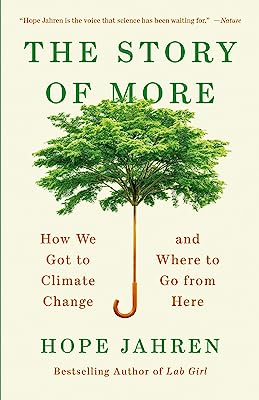 The Story of More is an impassioned open letter to humanity as we stand at the crossroads of survival and extinction. Jahren celebrates the long history of our enterprising spirit–which has tamed wild crops, cured diseases, and sent us to the moon–but also shows how that spirit has created excesses that are quickly warming our planet to dangerous levels. In short, highly readable chapters, she takes us through the science behind the key inventions–from electric power to large-scale farming and automobiles–that, even as they help us, release untenable amounts of carbon dioxide. She explains the current and projected consequences of greenhouse gases–from superstorms to rising sea levels–and the science-based tools that could help us fight back.
The Story of More is an impassioned open letter to humanity as we stand at the crossroads of survival and extinction. Jahren celebrates the long history of our enterprising spirit–which has tamed wild crops, cured diseases, and sent us to the moon–but also shows how that spirit has created excesses that are quickly warming our planet to dangerous levels. In short, highly readable chapters, she takes us through the science behind the key inventions–from electric power to large-scale farming and automobiles–that, even as they help us, release untenable amounts of carbon dioxide. She explains the current and projected consequences of greenhouse gases–from superstorms to rising sea levels–and the science-based tools that could help us fight back.
All We Can Save: Truth, Courage, and Solutions for the Climate Crisis – by Ayana Elizabeth Johnson (Editor), Katharine K. Wilkinson (Editor)
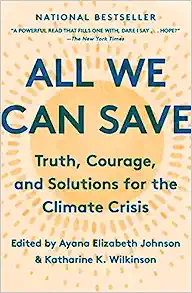 All We Can Save illuminates the expertise and insights of dozens of diverse women leading on climate in the United States–scientists, journalists, farmers, lawyers, teachers, activists, innovators, wonks, and designers, across generations, geographies, and race–and aims to advance a more representative, nuanced, and solution-oriented public conversation on the climate crisis. These women offer a spectrum of ideas and insights for how we can rapidly, radically reshape society. Intermixing essays with poetry and art, this book is both a balm and a guide for knowing and holding what has been done to the world, while bolstering our resolve never to give up on one another or our collective future. We must summon truth, courage, and solutions to turn away from the brink and toward life-giving possibility.
All We Can Save illuminates the expertise and insights of dozens of diverse women leading on climate in the United States–scientists, journalists, farmers, lawyers, teachers, activists, innovators, wonks, and designers, across generations, geographies, and race–and aims to advance a more representative, nuanced, and solution-oriented public conversation on the climate crisis. These women offer a spectrum of ideas and insights for how we can rapidly, radically reshape society. Intermixing essays with poetry and art, this book is both a balm and a guide for knowing and holding what has been done to the world, while bolstering our resolve never to give up on one another or our collective future. We must summon truth, courage, and solutions to turn away from the brink and toward life-giving possibility.
On Fire: The Burning Case for a Green New Deal – by Naomi Klein
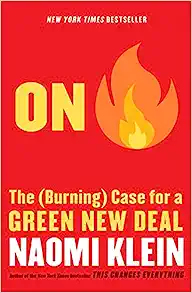 For more than twenty years, Naomi Klein has been the foremost chronicler of the economic war waged on both people and planet–and an unapologetic champion of a sweeping environmental agenda with justice at its center. In lucid, elegant dispatches from the frontlines of contemporary natural disaster, she pens surging, indispensable essays for a wide public: prescient advisories and dire warnings of what future awaits us if we refuse to act, as well as hopeful glimpses of a far better future. On Fire gathers for the first time more than a decade of her impassioned writing, and pairs it with new material on the staggeringly high stakes of our immediate political and economic choices. These long-form essays show Klein at her most prophetic and philosophical, investigating the climate crisis not only as a profound political challenge but as a spiritual and imaginative one, as well.
For more than twenty years, Naomi Klein has been the foremost chronicler of the economic war waged on both people and planet–and an unapologetic champion of a sweeping environmental agenda with justice at its center. In lucid, elegant dispatches from the frontlines of contemporary natural disaster, she pens surging, indispensable essays for a wide public: prescient advisories and dire warnings of what future awaits us if we refuse to act, as well as hopeful glimpses of a far better future. On Fire gathers for the first time more than a decade of her impassioned writing, and pairs it with new material on the staggeringly high stakes of our immediate political and economic choices. These long-form essays show Klein at her most prophetic and philosophical, investigating the climate crisis not only as a profound political challenge but as a spiritual and imaginative one, as well.
The Climate Book – by Greta Thunberg (Editor)
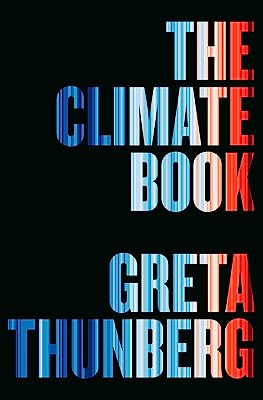 You might think it’s an impossible task: secure a safe future for life on Earth, at a scale and speed never seen, against all the odds. There is hope – but only if we listen to the science before it’s too late. In The Climate Book, Greta Thunberg has gathered the wisdom of over one hundred experts – geophysicists, oceanographers and meteorologists; engineers, economists and mathematicians; historians, philosophers and indigenous leaders – to equip us all with the knowledge we need to combat climate disaster. Alongside them, she shares her own stories of demonstrating and uncovering greenwashing around the world, revealing how much we have been kept in the dark. This is one of our biggest challenges, she shows, but also our greatest source of hope.
You might think it’s an impossible task: secure a safe future for life on Earth, at a scale and speed never seen, against all the odds. There is hope – but only if we listen to the science before it’s too late. In The Climate Book, Greta Thunberg has gathered the wisdom of over one hundred experts – geophysicists, oceanographers and meteorologists; engineers, economists and mathematicians; historians, philosophers and indigenous leaders – to equip us all with the knowledge we need to combat climate disaster. Alongside them, she shares her own stories of demonstrating and uncovering greenwashing around the world, revealing how much we have been kept in the dark. This is one of our biggest challenges, she shows, but also our greatest source of hope.
Climate & Conservation Related Works of Fiction
Flight Behavior- by Barbara Kingsolver
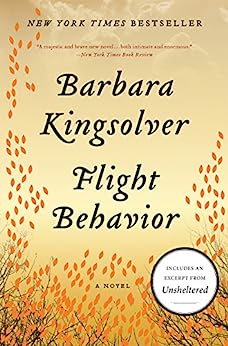 Discontented with her life of poverty on a failing farm in the Eastern United States, Dellarobia, a young mother, impulsively seeks out an affair. Instead, on the Appalachian mountains above her farm, she discovers something much more profoundly life-changing — a beautiful and terrible marvel of nature. As the world around her is suddenly transformed by a seeming miracle, can the old certainties they have lived by for centuries remain unchallenged? Flight Behavior is a captivating, topical and deeply human novel touching on class, poverty and climate change. It is Barbara Kingsolver’s most accessible novel yet, and explores the truths we live by, and the complexities that lie behind them.
Discontented with her life of poverty on a failing farm in the Eastern United States, Dellarobia, a young mother, impulsively seeks out an affair. Instead, on the Appalachian mountains above her farm, she discovers something much more profoundly life-changing — a beautiful and terrible marvel of nature. As the world around her is suddenly transformed by a seeming miracle, can the old certainties they have lived by for centuries remain unchallenged? Flight Behavior is a captivating, topical and deeply human novel touching on class, poverty and climate change. It is Barbara Kingsolver’s most accessible novel yet, and explores the truths we live by, and the complexities that lie behind them.
The Ministry for the Future – by Kim Stanley Robinson
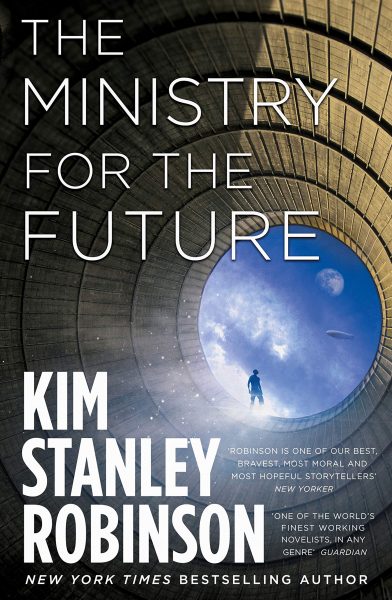 Established in 2025, the purpose of the new organization was simple: To advocate for the world’s future generations and to protect all living creatures, present and future. It soon became known as the Ministry for the Future, and this is its story. From legendary science fiction author Kim Stanley Robinson comes a vision of climate change unlike any ever imagined. Told entirely through fictional eye-witness accounts, The Ministry For The Future is a masterpiece of the imagination, the story of how climate change will affect us all over the decades to come. Its setting is not a desolate, post-apocalyptic world, but a future that is almost upon us – and in which we might just overcome the extraordinary challenges we face.
Established in 2025, the purpose of the new organization was simple: To advocate for the world’s future generations and to protect all living creatures, present and future. It soon became known as the Ministry for the Future, and this is its story. From legendary science fiction author Kim Stanley Robinson comes a vision of climate change unlike any ever imagined. Told entirely through fictional eye-witness accounts, The Ministry For The Future is a masterpiece of the imagination, the story of how climate change will affect us all over the decades to come. Its setting is not a desolate, post-apocalyptic world, but a future that is almost upon us – and in which we might just overcome the extraordinary challenges we face.
The Overstory – by Richard Powers
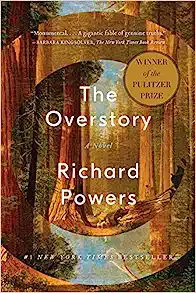 The Overstory is a sweeping, impassioned work of activism and resistance that is also a stunning evocation of – and paean to – the natural world. From the roots to the crown and back to the seeds, Richard Powers’s twelfth novel unfolds in concentric rings of interlocking fables that range from antebellum New York to the late twentieth-century Timber Wars of the Pacific Northwest and beyond. There is a world alongside ours—vast, slow, interconnected, resourceful, magnificently inventive, and almost invisible to us. This is the story of a handful of people who learn how to see that world and who are drawn up into its unfolding catastrophe.
The Overstory is a sweeping, impassioned work of activism and resistance that is also a stunning evocation of – and paean to – the natural world. From the roots to the crown and back to the seeds, Richard Powers’s twelfth novel unfolds in concentric rings of interlocking fables that range from antebellum New York to the late twentieth-century Timber Wars of the Pacific Northwest and beyond. There is a world alongside ours—vast, slow, interconnected, resourceful, magnificently inventive, and almost invisible to us. This is the story of a handful of people who learn how to see that world and who are drawn up into its unfolding catastrophe.
Cloud Cuckoo Land – by Anthony Doerr
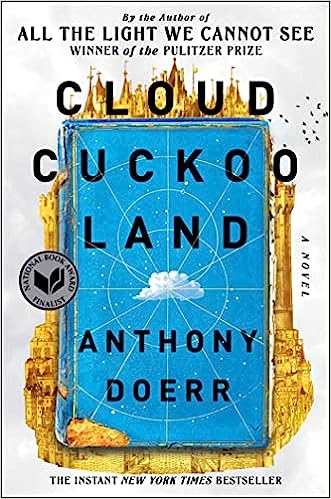 Constantinople, 1453: An orphaned seamstress and a cursed boy with a love for animals risk everything on opposite sides of a city wall to protect the people they love. Idaho, 2020: An impoverished, idealistic kid seeks revenge on a world that’s crumbling around him. Can he go through with it when a gentle old man stands between him and his plans? Unknown, Sometime in the Future: With her tiny community in peril, Konstance is the last hope for the human race. To find a way forward, she must look to the oldest stories of all for guidance. Bound together by a single ancient text, these tales interweave to form a tapestry of solace and resilience and a celebration of storytelling itself.
Constantinople, 1453: An orphaned seamstress and a cursed boy with a love for animals risk everything on opposite sides of a city wall to protect the people they love. Idaho, 2020: An impoverished, idealistic kid seeks revenge on a world that’s crumbling around him. Can he go through with it when a gentle old man stands between him and his plans? Unknown, Sometime in the Future: With her tiny community in peril, Konstance is the last hope for the human race. To find a way forward, she must look to the oldest stories of all for guidance. Bound together by a single ancient text, these tales interweave to form a tapestry of solace and resilience and a celebration of storytelling itself.
How High We Go In the Dark – by Sequoia Nagamatsu
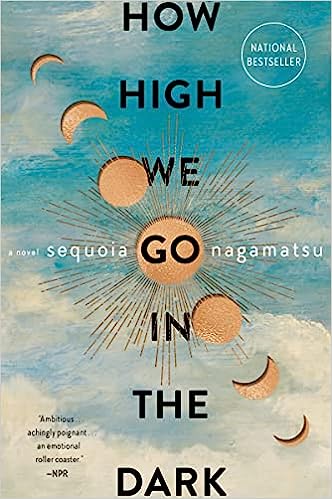 Beginning in 2030, a grieving archeologist arrives in the Arctic Circle to continue the work of his recently deceased daughter at the Batagaika crater, where researchers are studying long-buried secrets now revealed in melting permafrost, including the perfectly preserved remains of a girl who appears to have died of an ancient virus. Once unleashed, the Arctic Plague will reshape life on earth for generations to come, quickly traversing the globe, forcing humanity to devise a myriad of moving and inventive ways to embrace possibility in the face of tragedy. In a theme park designed for terminally ill children, a cynical employee falls in love with a mother desperate to hold on to her infected son. A heartbroken scientist searching for a cure finds a second chance at fatherhood when one of his test subjects—a pig—develops the capacity for human speech. A widowed painter and her teenaged granddaughter embark on a cosmic quest to locate a new home planet.
Beginning in 2030, a grieving archeologist arrives in the Arctic Circle to continue the work of his recently deceased daughter at the Batagaika crater, where researchers are studying long-buried secrets now revealed in melting permafrost, including the perfectly preserved remains of a girl who appears to have died of an ancient virus. Once unleashed, the Arctic Plague will reshape life on earth for generations to come, quickly traversing the globe, forcing humanity to devise a myriad of moving and inventive ways to embrace possibility in the face of tragedy. In a theme park designed for terminally ill children, a cynical employee falls in love with a mother desperate to hold on to her infected son. A heartbroken scientist searching for a cure finds a second chance at fatherhood when one of his test subjects—a pig—develops the capacity for human speech. A widowed painter and her teenaged granddaughter embark on a cosmic quest to locate a new home planet.
Sea of Tranquility – by Emily St. John Mandel
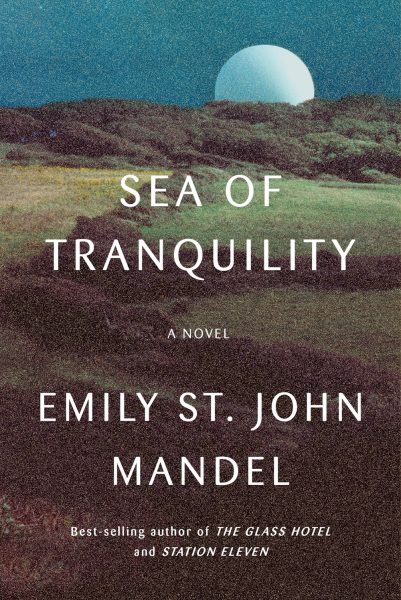 Edwin St. Andrew is eighteen years old when he crosses the Atlantic by steamship, exiled from polite society following an ill-conceived diatribe at a dinner party. He enters the forest, spellbound by the beauty of the Canadian wilderness, and suddenly hears the notes of a violin echoing in an airship terminal–an experience that shocks him to his core. Two centuries later a famous writer named Olive Llewellyn is on a book tour. She’s traveling all over Earth, but her home is the second moon colony, a place of white stone, spired towers, and artificial beauty. Within the text of Olive’s best-selling pandemic novel lies a strange passage: a man plays his violin for change in the echoing corridor of an airship terminal as the trees of a forest rise around him. When Gaspery-Jacques Roberts, a detective in the black-skied Night City, is hired to investigate an anomaly in the North American wilderness, he uncovers a series of lives upended: The exiled son of an earl driven to madness, a writer trapped far from home as a pandemic ravages Earth, and a childhood friend from the Night City who, like Gaspery himself, has glimpsed the chance to do something extraordinary that will disrupt the timeline of the universe.
Edwin St. Andrew is eighteen years old when he crosses the Atlantic by steamship, exiled from polite society following an ill-conceived diatribe at a dinner party. He enters the forest, spellbound by the beauty of the Canadian wilderness, and suddenly hears the notes of a violin echoing in an airship terminal–an experience that shocks him to his core. Two centuries later a famous writer named Olive Llewellyn is on a book tour. She’s traveling all over Earth, but her home is the second moon colony, a place of white stone, spired towers, and artificial beauty. Within the text of Olive’s best-selling pandemic novel lies a strange passage: a man plays his violin for change in the echoing corridor of an airship terminal as the trees of a forest rise around him. When Gaspery-Jacques Roberts, a detective in the black-skied Night City, is hired to investigate an anomaly in the North American wilderness, he uncovers a series of lives upended: The exiled son of an earl driven to madness, a writer trapped far from home as a pandemic ravages Earth, and a childhood friend from the Night City who, like Gaspery himself, has glimpsed the chance to do something extraordinary that will disrupt the timeline of the universe.
The Monkey Wrench Gang – Edward Abbey
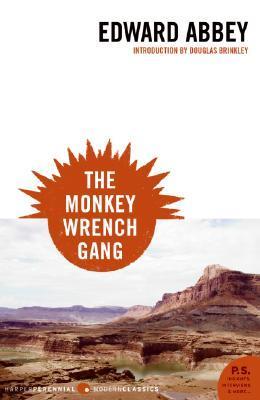 The story centers on Vietnam veteran George Washington Hayduke III, who returns to the desert to find his beloved canyons and rivers threatened by industrial development. On a rafting trip down the Colorado River, Hayduke joins forces with feminist saboteur Bonnie Abbzug, wilderness guide Seldom Seen Smith, and billboard torcher Doc Sarvis, M.D., and together they wander off to wage war on the big yellow machines, on dam builders and road builders and strip miners. As they do, his characters voice Abbey’s concerns about wilderness preservation (“Hell of a place to lose a cow,” Smith thinks to himself while roaming through the canyonlands of southern Utah. “Hell of a place to lose your heart. Hell of a place… to lose. Period”). Moving from one improbable situation to the next, packing more adventure into the space of a few weeks than most real people do in a lifetime, the motley gang puts fear into the hearts of their enemies, laughing all the while.
The story centers on Vietnam veteran George Washington Hayduke III, who returns to the desert to find his beloved canyons and rivers threatened by industrial development. On a rafting trip down the Colorado River, Hayduke joins forces with feminist saboteur Bonnie Abbzug, wilderness guide Seldom Seen Smith, and billboard torcher Doc Sarvis, M.D., and together they wander off to wage war on the big yellow machines, on dam builders and road builders and strip miners. As they do, his characters voice Abbey’s concerns about wilderness preservation (“Hell of a place to lose a cow,” Smith thinks to himself while roaming through the canyonlands of southern Utah. “Hell of a place to lose your heart. Hell of a place… to lose. Period”). Moving from one improbable situation to the next, packing more adventure into the space of a few weeks than most real people do in a lifetime, the motley gang puts fear into the hearts of their enemies, laughing all the while.
Non-Fiction Works About Mindfulness
Wherever You Go, There You Are – by Jon Kabat-Zinn
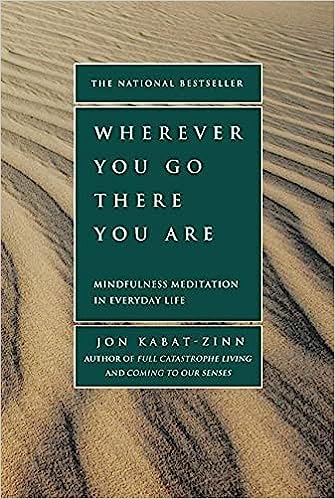 In this book, the author maps out a simple path for cultivating mindfulness in one’s own life. It speaks both to those coming to meditation for the first time and to longtime practitioners, anyone who cares deeply about reclaiming the richness of his or her moments.
In this book, the author maps out a simple path for cultivating mindfulness in one’s own life. It speaks both to those coming to meditation for the first time and to longtime practitioners, anyone who cares deeply about reclaiming the richness of his or her moments.
Freedom from the Known – by J. Krishnamurti
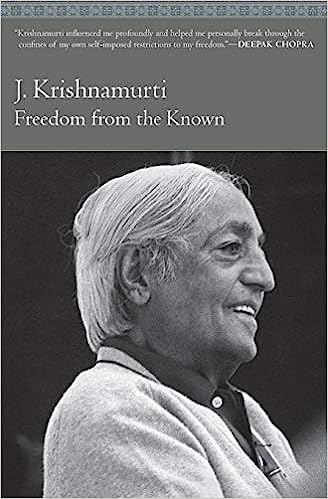 Krishnamurti shows how people can free themselves radically and immediately from the tyranny of the expected, no matter what their age–opening the door to transforming society and their relationships.
Krishnamurti shows how people can free themselves radically and immediately from the tyranny of the expected, no matter what their age–opening the door to transforming society and their relationships.
The Rhythm of Life: Living Every Day with Passion and Purpose – by Matthew Kelly
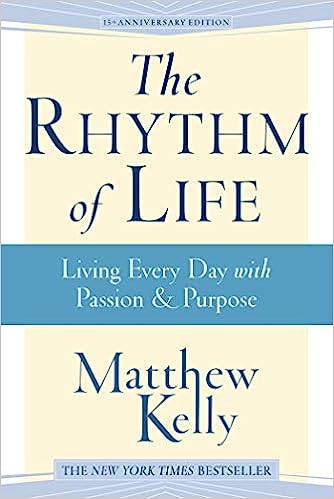 Do you ever feel that if you weren’t so busy you would be happier, healthier, more effective, more fulfilled…and maybe even a better person? Once every twenty-five years or so, a book comes along that perfectly identifies our common search and struggle for happiness, and teaches us how to find lasting fulfillment in a changing world. This is that book. The Rhythm of Life will help you to bring into focus who you are and why you are here. Through this book Matthew Kelly will help you discover your legitimate needs, deepest desires, and unique talents. He will introduce you to the-best-version-of-yourself and lead you to a life filled with passion and purpose.
Do you ever feel that if you weren’t so busy you would be happier, healthier, more effective, more fulfilled…and maybe even a better person? Once every twenty-five years or so, a book comes along that perfectly identifies our common search and struggle for happiness, and teaches us how to find lasting fulfillment in a changing world. This is that book. The Rhythm of Life will help you to bring into focus who you are and why you are here. Through this book Matthew Kelly will help you discover your legitimate needs, deepest desires, and unique talents. He will introduce you to the-best-version-of-yourself and lead you to a life filled with passion and purpose.
The Four Agreements – by don Miguel Ruiz
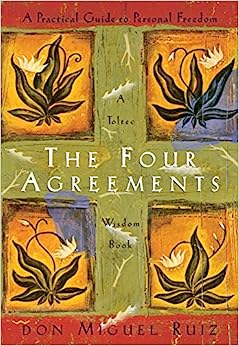 In The Four Agreements, don Miguel Ruiz reveals the source of self-limiting beliefs that rob us of joy and create needless suffering. Based on ancient Toltec wisdom, the Four Agreements offer a powerful code of conduct that can rapidly transform our lives to a new experience of freedom, true happiness, and love.
In The Four Agreements, don Miguel Ruiz reveals the source of self-limiting beliefs that rob us of joy and create needless suffering. Based on ancient Toltec wisdom, the Four Agreements offer a powerful code of conduct that can rapidly transform our lives to a new experience of freedom, true happiness, and love.
Titles About Activism and Tough Conversations
High Conflict: Why We Get Trapped and How We Get Out – by Amanda Ripley
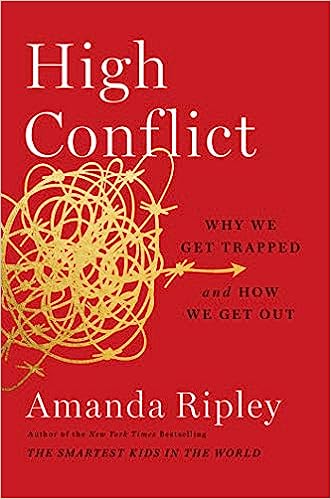 When we are baffled by the insanity of the “other side”—in our politics, at work, or at home—it’s because we aren’t seeing how the conflict itself has taken over. That’s what “high conflict” does. It’s the invisible hand of our time. And it’s different from the useful friction of healthy conflict. That’s good conflict, and it’s a necessary force that pushes us to be better people. High conflict, by contrast, is what happens when discord distills into a good-versus-evil kind of feud, the kind with an us and a them.
When we are baffled by the insanity of the “other side”—in our politics, at work, or at home—it’s because we aren’t seeing how the conflict itself has taken over. That’s what “high conflict” does. It’s the invisible hand of our time. And it’s different from the useful friction of healthy conflict. That’s good conflict, and it’s a necessary force that pushes us to be better people. High conflict, by contrast, is what happens when discord distills into a good-versus-evil kind of feud, the kind with an us and a them.
We Need to Talk: How to Have Conversations that Matter – by Celeste Headlee
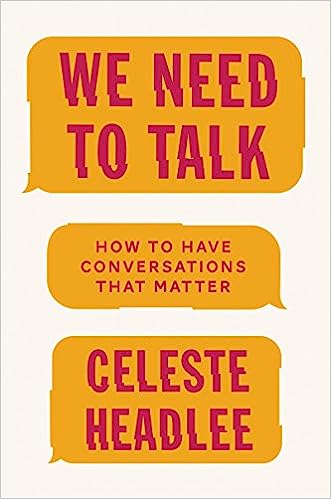 Today most of us communicate from behind electronic screens, and studies show that Americans feel less connected and more divided than ever before. The blame for some of this disconnect can be attributed to our political landscape, but the erosion of our conversational skills as a society lies with us as individuals. And the only way forward, says Headlee, is to start talking to each other. In We Need to Talk, she outlines the strategies that have made her a better conversationalist—and offers simple tools that can improve anyone’s communication.
Today most of us communicate from behind electronic screens, and studies show that Americans feel less connected and more divided than ever before. The blame for some of this disconnect can be attributed to our political landscape, but the erosion of our conversational skills as a society lies with us as individuals. And the only way forward, says Headlee, is to start talking to each other. In We Need to Talk, she outlines the strategies that have made her a better conversationalist—and offers simple tools that can improve anyone’s communication.
Youth to Power: Your Voice and How to Use It – by Jamie Margolin
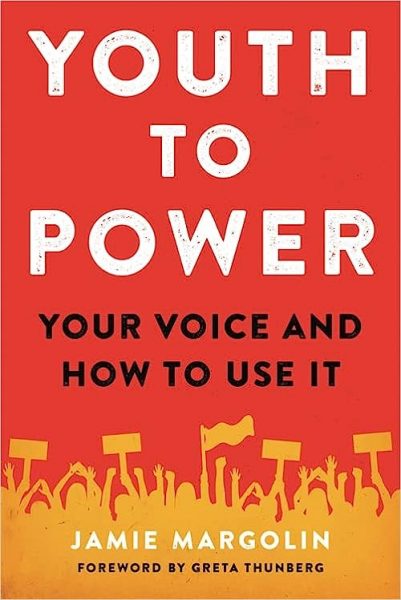 Jamie Margolin has been organizing and protesting since she was fourteen years old. Now the co-leader of a global climate action movement, she knows better than most how powerful a young person can be. You don’t have to be able to vote or hold positions of power to change the world. In Youth to Power, Jamie presents the essential guide to changemaking, with advice on writing and pitching op-eds, organizing successful events and peaceful protests, time management as a student activist, utilizing social media and traditional media to spread a message, and sustaining long-term action.
Jamie Margolin has been organizing and protesting since she was fourteen years old. Now the co-leader of a global climate action movement, she knows better than most how powerful a young person can be. You don’t have to be able to vote or hold positions of power to change the world. In Youth to Power, Jamie presents the essential guide to changemaking, with advice on writing and pitching op-eds, organizing successful events and peaceful protests, time management as a student activist, utilizing social media and traditional media to spread a message, and sustaining long-term action.
Titles to Help Bring You More in Touch With Nature
The Soul of an Octopus: A Surprising Exploration Into the Wonder of Consciousness – by Sy Montgomery
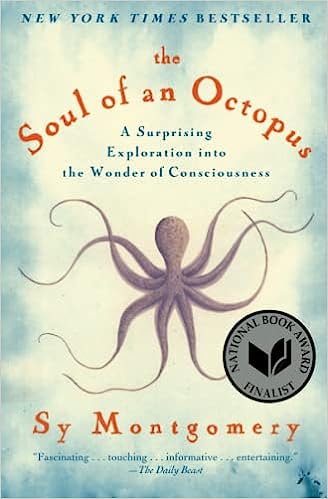 In pursuit of the wild, solitary, predatory octopus, popular naturalist Sy Montgomery has practiced true immersion journalism. From New England aquarium tanks to the reefs of French Polynesia and the Gulf of Mexico, she has befriended octopuses with strikingly different personalities—gentle Athena, assertive Octavia, curious Kali, and joyful Karma. Each creature shows her cleverness in myriad ways: escaping enclosures like an orangutan; jetting water to bounce balls; and endlessly tricking companions with multiple “sleights of hand” to get food. Scientists have only recently accepted the intelligence of dogs, birds, and chimpanzees but now are watching octopuses solve problems and are trying to decipher the meaning of the animal’s color-changing techniques. Montgomery chronicles the growing appreciation of this mollusk as she tells a unique love story.
In pursuit of the wild, solitary, predatory octopus, popular naturalist Sy Montgomery has practiced true immersion journalism. From New England aquarium tanks to the reefs of French Polynesia and the Gulf of Mexico, she has befriended octopuses with strikingly different personalities—gentle Athena, assertive Octavia, curious Kali, and joyful Karma. Each creature shows her cleverness in myriad ways: escaping enclosures like an orangutan; jetting water to bounce balls; and endlessly tricking companions with multiple “sleights of hand” to get food. Scientists have only recently accepted the intelligence of dogs, birds, and chimpanzees but now are watching octopuses solve problems and are trying to decipher the meaning of the animal’s color-changing techniques. Montgomery chronicles the growing appreciation of this mollusk as she tells a unique love story.
How to Be a Good Creature: A Memoir in Thirteen Animals – by Sy Montgomery
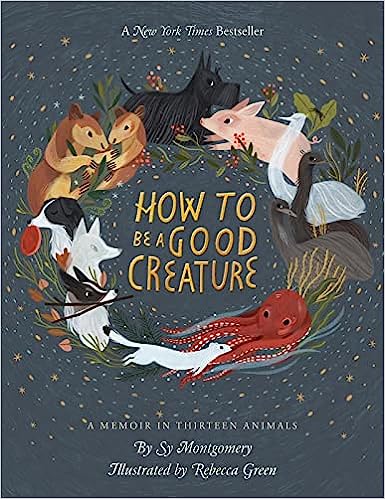 This restorative memoir reflects on the personalities and quirks of thirteen animals and the truths revealed by their grace. It also explores vast themes: the otherness and sameness of people and animals; the various ways we learn to love and become empathetic; how we find our passion; how we create our families; coping with loss and despair; gratitude; forgiveness; and most of all, how to be a good creature in the world.
This restorative memoir reflects on the personalities and quirks of thirteen animals and the truths revealed by their grace. It also explores vast themes: the otherness and sameness of people and animals; the various ways we learn to love and become empathetic; how we find our passion; how we create our families; coping with loss and despair; gratitude; forgiveness; and most of all, how to be a good creature in the world.
The Secret Wisdom of Nature: Trees, Animals, and the Extraordinary Balance of All Living Things ― Stories from Science and Observation – by Peter Wohlleben
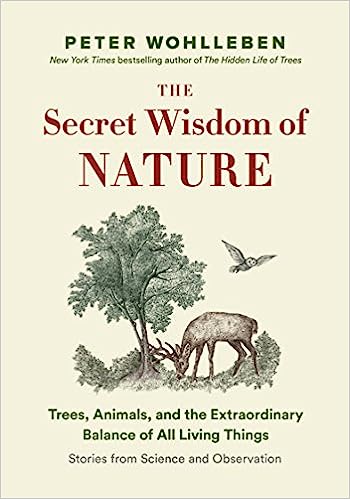 In The Secret Wisdom of Nature, master storyteller and international sensation Peter Wohlleben takes readers on a thought-provoking exploration of the vast natural systems that make life on Earth possible. In this tour of an almost unfathomable world, Wohlleben describes the fascinating interplay between animals and plants and answers such questions as: How do they influence each other? Do lifeforms communicate across species boundaries? And what happens when this finely tuned system gets out of sync?
In The Secret Wisdom of Nature, master storyteller and international sensation Peter Wohlleben takes readers on a thought-provoking exploration of the vast natural systems that make life on Earth possible. In this tour of an almost unfathomable world, Wohlleben describes the fascinating interplay between animals and plants and answers such questions as: How do they influence each other? Do lifeforms communicate across species boundaries? And what happens when this finely tuned system gets out of sync?
Becoming Wild: How Animals Learn Who They Are – by Cal Safina
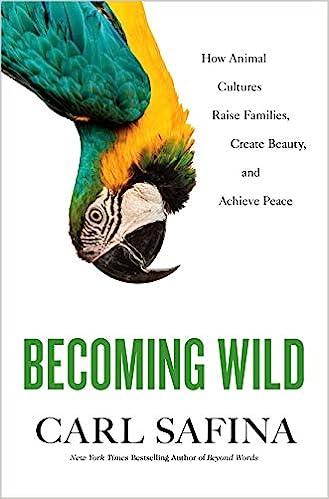 Becoming Wild offers a glimpse into cultures among non-human animals through looks at the lives of individuals in different present-day animal societies. By showing how others teach and learn, Safina offers a fresh understanding of what is constantly going on beyond humanity. With reporting from deep in nature, alongside individual creatures in their free-living communities, this book offers a very privileged glimpse behind the curtain of life on Earth, and helps inform the answer to that most urgent of questions: Who are we here with?
Becoming Wild offers a glimpse into cultures among non-human animals through looks at the lives of individuals in different present-day animal societies. By showing how others teach and learn, Safina offers a fresh understanding of what is constantly going on beyond humanity. With reporting from deep in nature, alongside individual creatures in their free-living communities, this book offers a very privileged glimpse behind the curtain of life on Earth, and helps inform the answer to that most urgent of questions: Who are we here with?
For Small Creatures Such as We: Rituals for Finding Meaning in Our Unlikely World – by Sasha Sagan
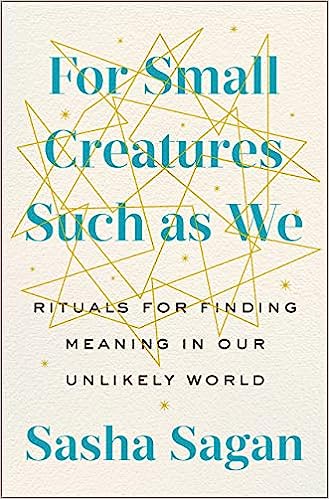 Sasha Sagan was raised by secular parents, the astronomer Carl Sagan and the writer and producer Ann Druyan. They taught her that the natural world and vast cosmos are full of profound beauty, that science reveals truths more wondrous than any myth or fable. When Sagan herself became a mother, she began her own hunt for the natural phenomena behind our most treasured occasions–from births to deaths, holidays to weddings, anniversaries, and more–growing these roots into a new set of rituals for her young daughter that honor the joy and significance of each experience without relying on religious framework. As Sagan shares these rituals, For Small Creatures Such as We becomes a tribute to a father, a newborn daughter, a marriage, and the natural world–a celebration of life itself, and the power of our families and beliefs to bring us together.
Sasha Sagan was raised by secular parents, the astronomer Carl Sagan and the writer and producer Ann Druyan. They taught her that the natural world and vast cosmos are full of profound beauty, that science reveals truths more wondrous than any myth or fable. When Sagan herself became a mother, she began her own hunt for the natural phenomena behind our most treasured occasions–from births to deaths, holidays to weddings, anniversaries, and more–growing these roots into a new set of rituals for her young daughter that honor the joy and significance of each experience without relying on religious framework. As Sagan shares these rituals, For Small Creatures Such as We becomes a tribute to a father, a newborn daughter, a marriage, and the natural world–a celebration of life itself, and the power of our families and beliefs to bring us together.
Braiding Sweetgrass: Indigenous Wisdom, Scientific Knowledge, and the Teaching of Plants – by Robin Wall Kimmerer
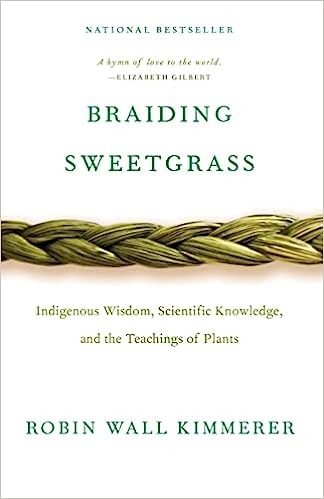 As a botanist, Robin Wall Kimmerer has been trained to ask questions of nature with the tools of science. As a member of the Citizen Potawatomi Nation, she embraces the notion that plants and animals are our oldest teachers. In Braiding Sweetgrass, Kimmerer brings these lenses of knowledge together to show that the awakening of a wider ecological consciousness requires the acknowledgment and celebration of our reciprocal relationship with the rest of the living world. For only when we can hear the languages of other beings are we capable of understanding the generosity of the earth, and learning to give our own gifts in return.
As a botanist, Robin Wall Kimmerer has been trained to ask questions of nature with the tools of science. As a member of the Citizen Potawatomi Nation, she embraces the notion that plants and animals are our oldest teachers. In Braiding Sweetgrass, Kimmerer brings these lenses of knowledge together to show that the awakening of a wider ecological consciousness requires the acknowledgment and celebration of our reciprocal relationship with the rest of the living world. For only when we can hear the languages of other beings are we capable of understanding the generosity of the earth, and learning to give our own gifts in return.
A Walk in the Woods: Rediscovering America on the Appalachian Trail – by Bill Bryson
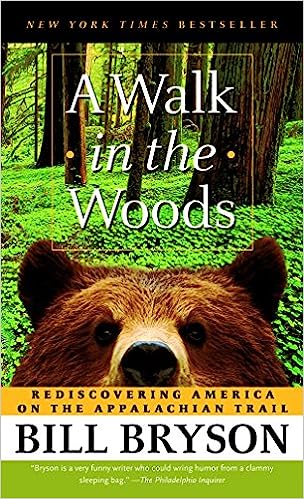 The Appalachian Trail stretches from Georgia to Maine and covers some of the most breathtaking terrain in America—majestic mountains, silent forests, sparking lakes. If you’re going to take a hike, it’s probably the place to go. And Bill Bryson is surely the most entertaining guide you’ll find. He introduces us to the history and ecology of the trail and to some of the other hardy (or just foolhardy) folks he meets along the way—and a couple of bears.
The Appalachian Trail stretches from Georgia to Maine and covers some of the most breathtaking terrain in America—majestic mountains, silent forests, sparking lakes. If you’re going to take a hike, it’s probably the place to go. And Bill Bryson is surely the most entertaining guide you’ll find. He introduces us to the history and ecology of the trail and to some of the other hardy (or just foolhardy) folks he meets along the way—and a couple of bears.
Desert Solitaire: A Season in the Wilderness – by Edward Abbey
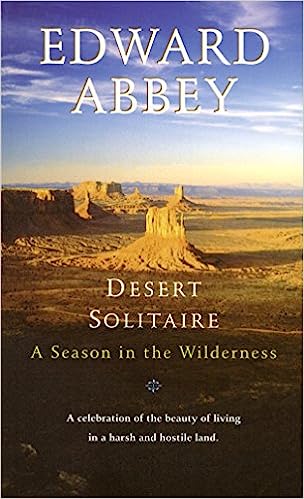 First published in 1968, Desert Solitaire is one of Edward Abbey’s most critically acclaimed works and marks his first foray into the world of nonfiction writing. Written while Abbey was working as a ranger at Arches National Park outside of Moab, Utah, Desert Solitaire is a rare view of one man’s quest to experience nature in its purest form. Through prose that is by turns passionate and poetic, Abbey reflects on the condition of our remaining wilderness and the future of a civilization that cannot reconcile itself to living in the natural world as well as his own internal struggle with morality. As the world continues its rapid development, Abbey’s cry to maintain the natural beauty of the West remains just as relevant today as when this book was written.
First published in 1968, Desert Solitaire is one of Edward Abbey’s most critically acclaimed works and marks his first foray into the world of nonfiction writing. Written while Abbey was working as a ranger at Arches National Park outside of Moab, Utah, Desert Solitaire is a rare view of one man’s quest to experience nature in its purest form. Through prose that is by turns passionate and poetic, Abbey reflects on the condition of our remaining wilderness and the future of a civilization that cannot reconcile itself to living in the natural world as well as his own internal struggle with morality. As the world continues its rapid development, Abbey’s cry to maintain the natural beauty of the West remains just as relevant today as when this book was written.
Deep Creek: Finding Hope in the High Country – by Pam Houston
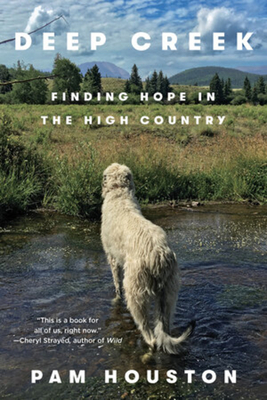 On her 120-acre homestead high in the Colorado Rockies, beloved writer Pam Houston learns what it means to care for a piece of land and the creatures on it. Houston’s ranch becomes her sanctuary, a place where she discovers how the natural world has mothered and healed her after a childhood of parental abuse and neglect.
On her 120-acre homestead high in the Colorado Rockies, beloved writer Pam Houston learns what it means to care for a piece of land and the creatures on it. Houston’s ranch becomes her sanctuary, a place where she discovers how the natural world has mothered and healed her after a childhood of parental abuse and neglect.
The Sun Is a Compass: A 4,000-Mile Journey into the Alaskan Wilds – by Caroline Van Hemert
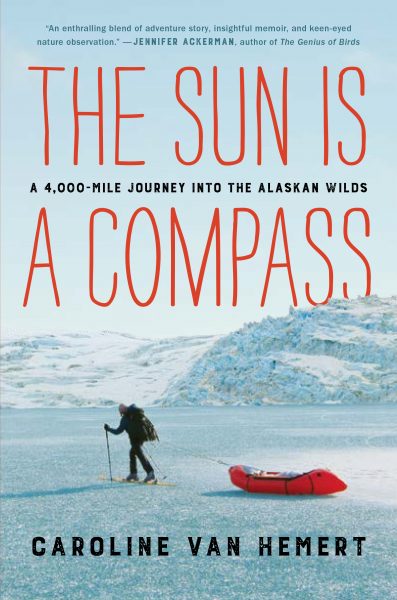 In March of 2012, Hemert and her husband set off on a 4,000-mile wilderness journey from the Pacific rainforest to the Alaskan Arctic, traveling by rowboat, ski, foot, raft, and canoe. Together, they survived harrowing dangers while also experiencing incredible moments of joy and grace — migrating birds silhouetted against the moon, the steamy breath of caribou, and the bond that comes from sharing such experiences. A unique blend of science, adventure, and personal narrative, The Sun is a Compass explores the bounds of the physical body and the tenuousness of life in the company of the creatures who make their homes in the wildest places left in North America. Inspiring and beautifully written, this love letter to nature is a lyrical testament to the resilience of the human spirit.
In March of 2012, Hemert and her husband set off on a 4,000-mile wilderness journey from the Pacific rainforest to the Alaskan Arctic, traveling by rowboat, ski, foot, raft, and canoe. Together, they survived harrowing dangers while also experiencing incredible moments of joy and grace — migrating birds silhouetted against the moon, the steamy breath of caribou, and the bond that comes from sharing such experiences. A unique blend of science, adventure, and personal narrative, The Sun is a Compass explores the bounds of the physical body and the tenuousness of life in the company of the creatures who make their homes in the wildest places left in North America. Inspiring and beautifully written, this love letter to nature is a lyrical testament to the resilience of the human spirit.
Fuzz: When Nature Breaks the Law – by Mary Roach
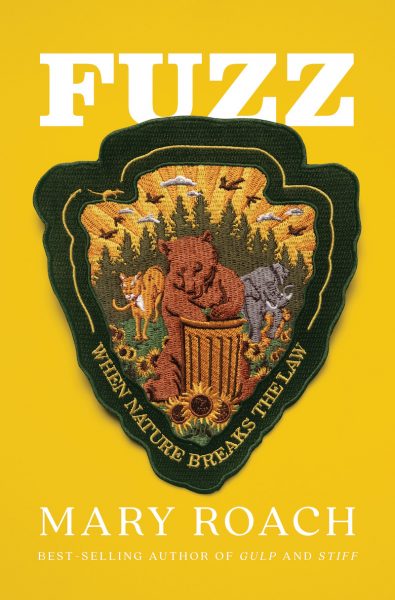 What’s to be done about a jaywalking moose? A bear caught breaking and entering? A murderous tree? Three hundred years ago, animals that broke the law would be assigned legal representation and put on trial. The answers are best found not in jurisprudence but in science: the curious science of human-wildlife conflict, a discipline at the crossroads of human behavior and wildlife biology. Roach tags along with animal-attack forensics investigators, human-elephant conflict specialists, bear managers, and “danger tree” faller blasters. Combining little-known forensic science and conservation genetics with a motley cast of laser scarecrows, langur impersonators, and trespassing squirrels, Roach reveals as much about humanity as about nature’s lawbreakers. When it comes to “problem” wildlife, she finds, humans are more often the problem—and the solution.
What’s to be done about a jaywalking moose? A bear caught breaking and entering? A murderous tree? Three hundred years ago, animals that broke the law would be assigned legal representation and put on trial. The answers are best found not in jurisprudence but in science: the curious science of human-wildlife conflict, a discipline at the crossroads of human behavior and wildlife biology. Roach tags along with animal-attack forensics investigators, human-elephant conflict specialists, bear managers, and “danger tree” faller blasters. Combining little-known forensic science and conservation genetics with a motley cast of laser scarecrows, langur impersonators, and trespassing squirrels, Roach reveals as much about humanity as about nature’s lawbreakers. When it comes to “problem” wildlife, she finds, humans are more often the problem—and the solution.
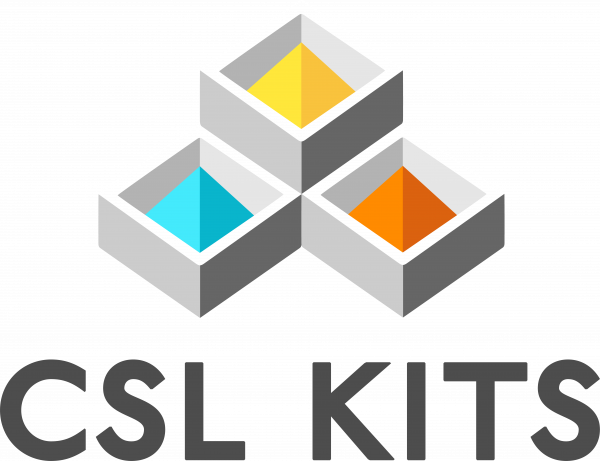 Do you want ideas for some hands on activities to share with your patrons and community? The Colorado State Library has recently released a Climate Crisis
Do you want ideas for some hands on activities to share with your patrons and community? The Colorado State Library has recently released a Climate Crisis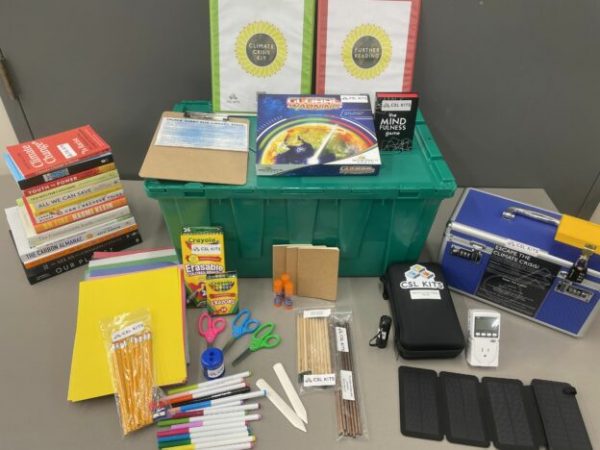 Resource Kit. With this kit, the Colorado State Library provides you with the tools needed to help make this necessary conversation easier to have, as well as ways that you can help protect the planet. Included in the kit are activities for all ages, book suggestions for including in your library collection, and ideas for helping be the change.
Resource Kit. With this kit, the Colorado State Library provides you with the tools needed to help make this necessary conversation easier to have, as well as ways that you can help protect the planet. Included in the kit are activities for all ages, book suggestions for including in your library collection, and ideas for helping be the change.
There are two copies of the Climate Crisis Kit, and both are available for loan, just like the book club sets, and contain information and programming ideas for educational events at the library. Check these kits out on the Resource Kits website.
Book club sets are circulated to participating libraries via the CLiC courier. If you are interested in receiving book club sets but are not already a member library, use the online form to get signed up. Since the BCR has always relied on book donations, we are deeply grateful to all of the institutions and individuals that have donated sets and helped make the collection stronger. Please contact bookclub@coloradovirtuallibrary.org for questions or to discuss donations.
*NOTE: All descriptions are adapted from goodreads.com.
- Book Club Author Suggestion: Kristin Hannah - May 21, 2025
- Accessibility Quick Tip: Invitation from OIT - March 19, 2025
- Book Club Author Suggestion: John Green - February 12, 2025